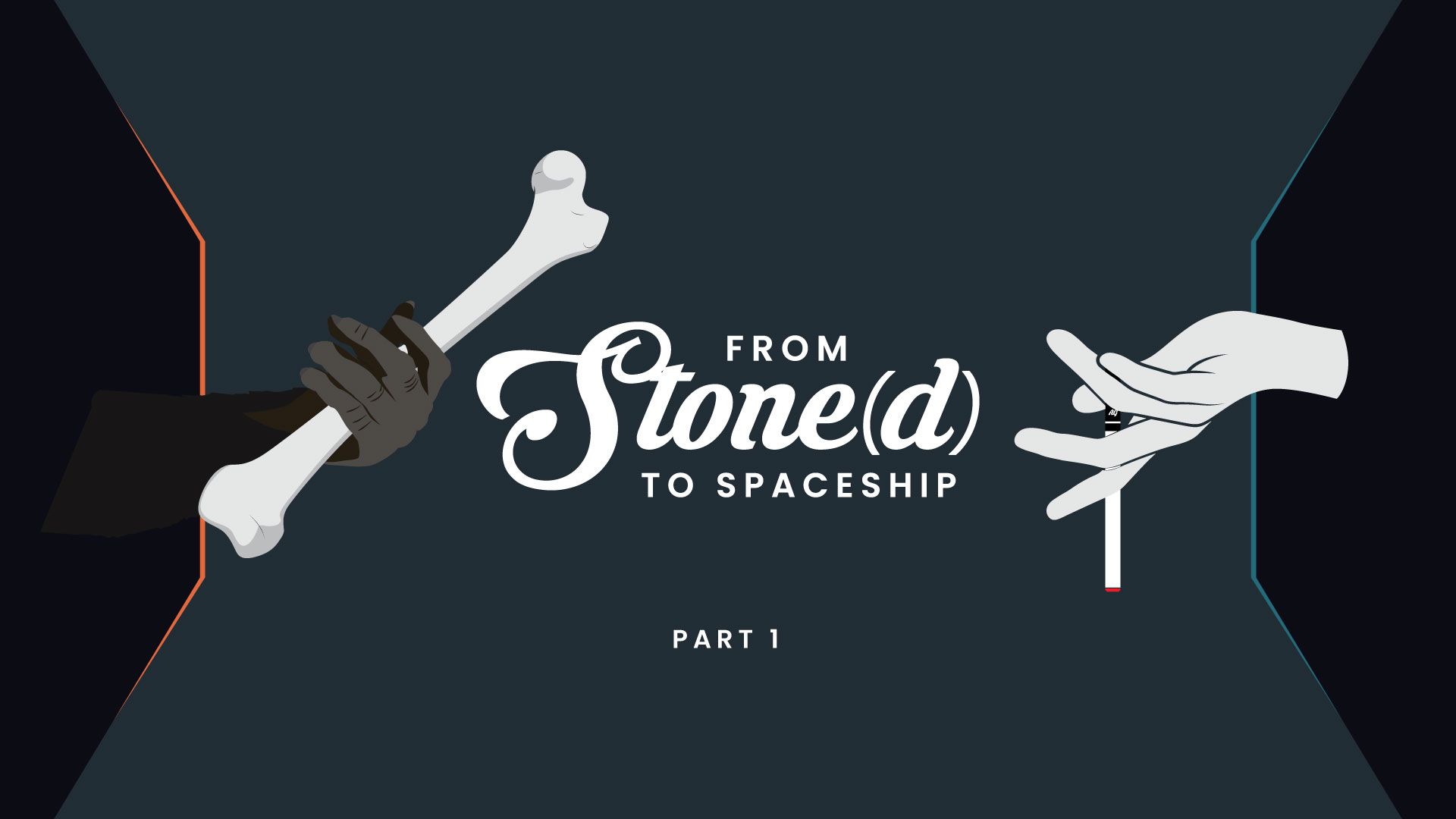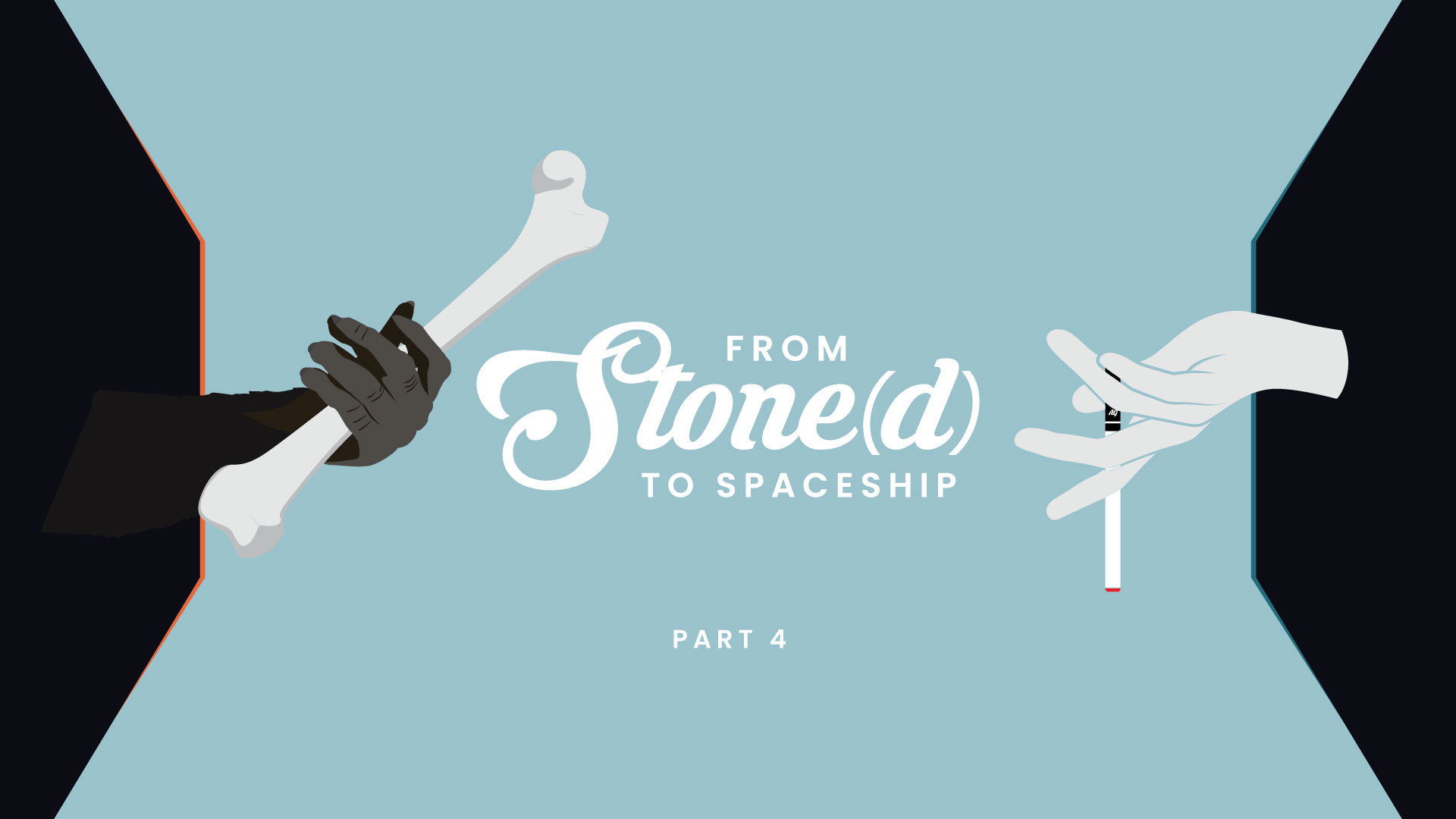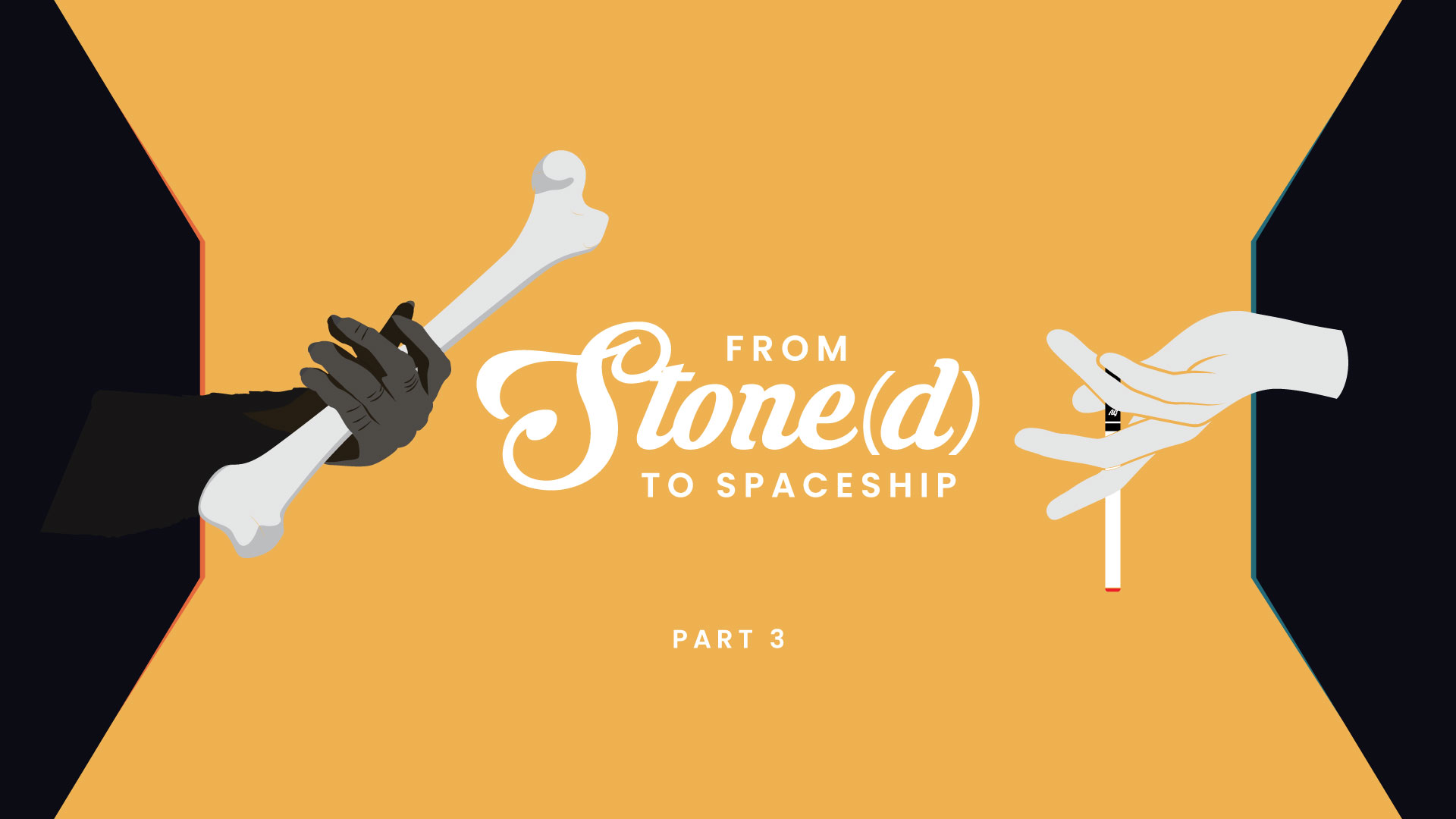
From Stone(d) To Spaceship: part 1
From bone to joint, a tongue-in-cheek series exploring the notion that the All Good pre-roll might just be the pinnacle of evolution
In the iconic monolith scene from 2001: A Space Odyssey, we watch a civilization born from worship, a nudge into consciousness. Could the monolith be a symbol for cannabis? Could Kubrick have intended such an interpretation, while he sat back, stoned off his rocker, as the accolades poured in? Would you honestly put it past him with that trippy wormhole sequence at the end of a rather slow-moving film?
And that begs the question: Did mind-altering substances stimulate human consciousness? Dr. Terrence McKenna seems to think so. Read more about that here!
As humanoids, we really like to eff with our environment, don’t we? Way more than other animals, even as they shape their worlds to suit their needs with dens and nests. Beavers though. Beavers might take the cake with their appetite for destruction, but they’re still a far cry from the structures and solutions we’ve incanted into existence.
Our world bows at our command, built of things someone had to, well, think of. Herein lies the theory of the stoned ape—that when we started trippin’, we really started thinkin’. Our brains evolved, and—maybe fueled by substances—allowed us the creativity to craft our surroundings at the behest of our vast imagination, in the most effective ways.
Charles Darwin, in his groundbreaking studies of finches on the Galápagos Islands, postulated that fitness was a flighty process, and we could all go the way of the dodo with even the slightest tragedy. But let’s leave that to the birds for now, and talk about something a little less hairy.
Self-medication is a common theme in the order Primates. To give you just a couple of “shitty”—but fascinating—examples:
1. Primatologists have discovered that chimpanzees, finding themselves ridden with a certain digestive parasite, will often ingest a specific leaf. Later, these primatologists will get elbow deep in the scat of said chimpanzees, and find the parasitic culprits wrapped within the excreted leaves. This is brilliant, because the chimpanzee somehow knew not only which parasite plagued them, but also which leaf would make them feel all good again.
2. Macaques have been known to eat clay containing kaopectate to alleviate an upset tummy, again a display of what makes them feel all good. Incidentally, kaopectate is the main ingredient in Imodium, in case you didn’t know. They’ll also wash their potatoes in sea water to, you know, make them salty. They haven’t quite figured out how to use an air fryer, but I’m sure once they build a Walmart, that’ll all be history.
3. When humans are looking to feel all good, they turn to various substances to give them an altered experience. They might ferment some grapes and drink to get a little dizzy. They might find a special, somewhat poisonous fungus in the forest and ingest it to get a little trippy. Or they might pluck a bud from the most wonderful plant of all, and there are many ways that humans can use the plant to feel alllll goooood.
But what does it all mean???
Stay tuned for the next instalment of Stone(d) to Spaceship, where we explore the nitty gritty of evolution—of cannabis, that is.
– Words by Kasia Gorski
Related posts
Vaporize…
What is Live Resin, and how is it made? Well, pal, you’ve got the questions, and we’ve got the a
From Stone(d) To Spaceship: part 4
From bone to joint, a tongue-in-cheek series exploring the notion that the All Good pre-roll might j
From Stone(d) To Spaceship: part 3
From bone to joint, a tongue-in-cheek series exploring the notion that the All Good pre-roll might j



